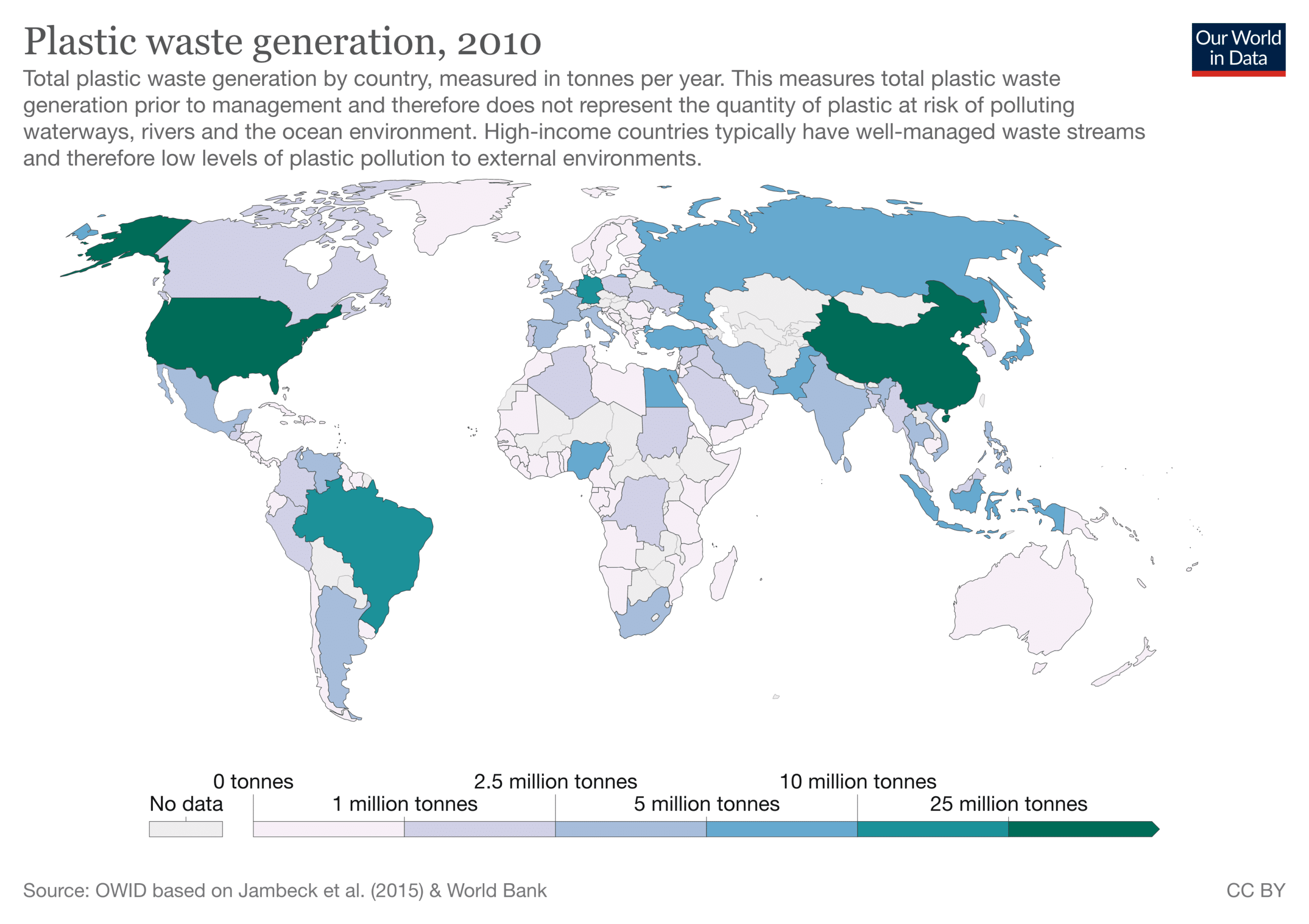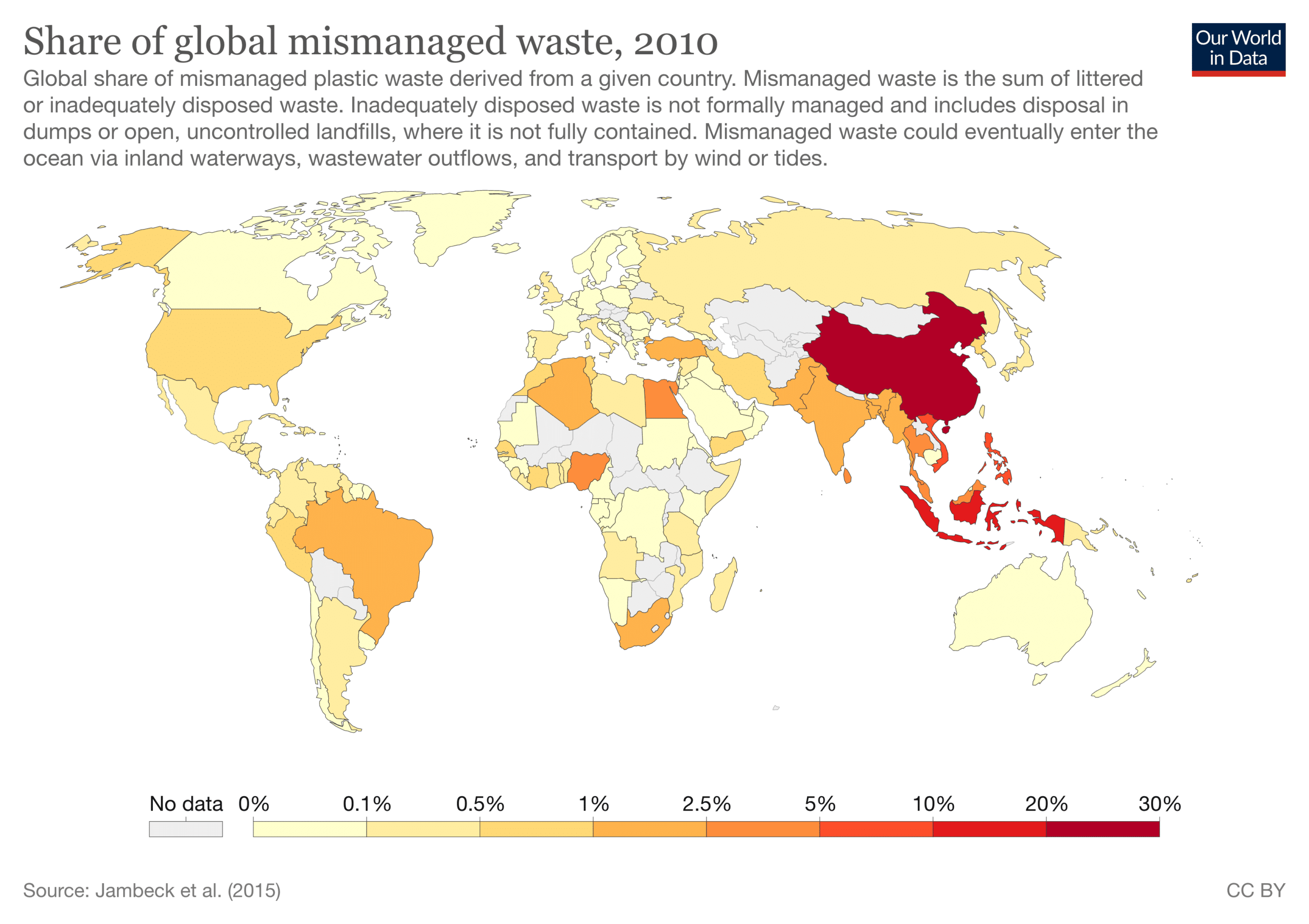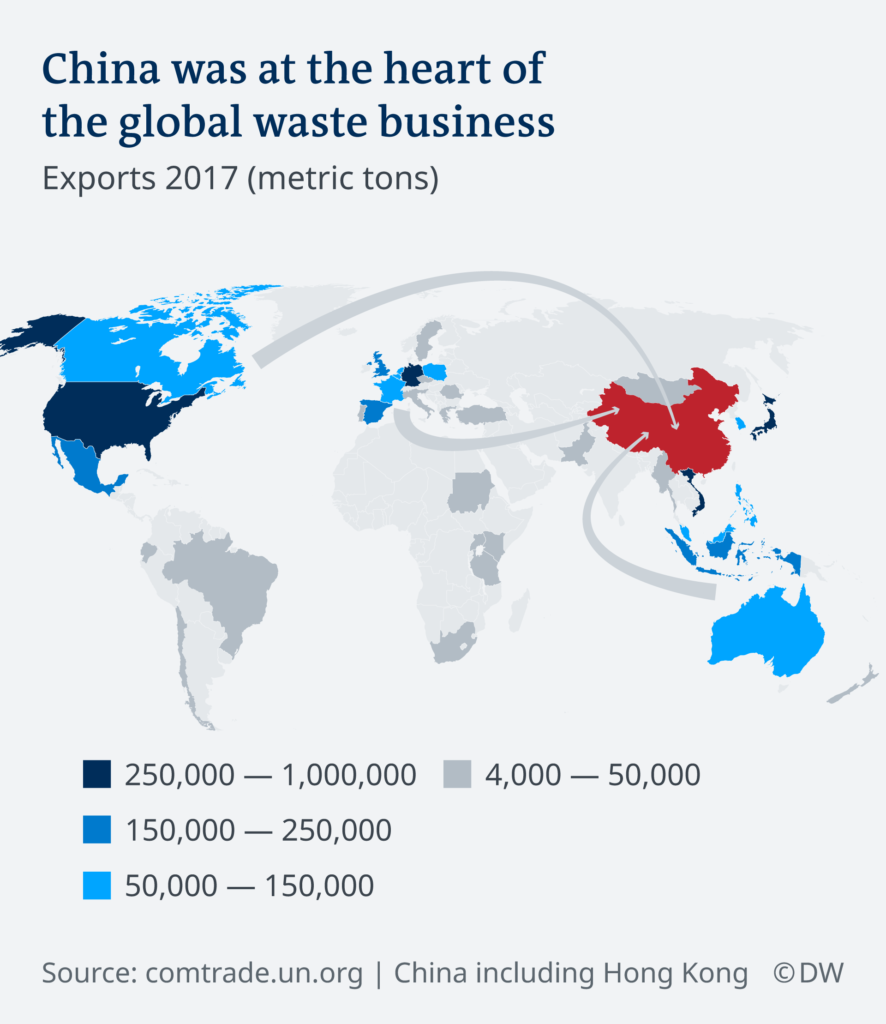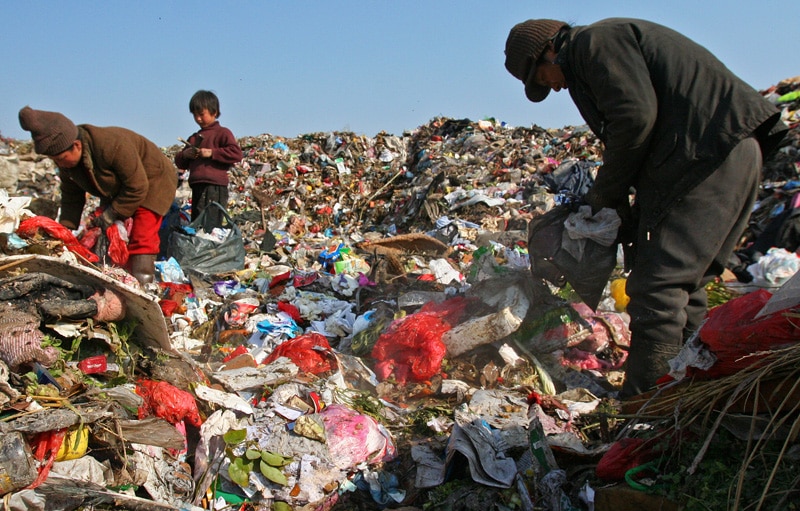The ubiquitous and pervasive plastic can be found in almost all parts of our daily lives thanks to its convenience and low prices. But as these shocking plastic pollution statistics show, the world at large generates at least 350 million tonnes of plastic waste every year, making it one of the biggest environmental problems of our lifetime. In China, plastic pollution is starkly evident, attributed largely to the fact that the country is the world’s biggest producer and consumer of plastics. What is the current state of plastic pollution in China and how does the country deal with it?
—
The Global Plastic Pollution Crisis
The global plastic pollution crisis continues to worsen every year. Today, the world produces more than 400 million tonnes of plastic waste each year, which is projected to double by 2040 if no action is taken. What’s more, about 91% of all plastic that has ever been made is not recycled, meaning that plastic – which can take up to 500 years to decompose – keeps accumulating and degrading our natural environments.
Eight to 14 million tons of plastic waste ends up in oceans every single year, causing great harm to marine life, from accidental ingestion and entanglement, to increasing the risk of invasive species, which can throw entire ecosystems off balance. In the wake of the Covid-19 pandemic, plastic consumption has soared, adding an extra 25,900 tonnes of plastics in the ocean – that‘s equivalent to more than 2,000 double decker buses.
Single-use plastics are also made almost entirely from fossil fuels. If single-use plastic production remains at the current trajectory of growth, they could account for five to 10% of the world’s greenhouse gas emissions by 2050, further exacerbating climate change.

Global plastic waste generation by country. Image by: Our World in Data
Plastic Pollution in China
Plastic pollution has long plagued China, along with severe air pollution. Not only does the country consume at least one fifth of the world’s plastics, it is also the single largest producer and exporter of single-use and virgin plastics (meaning new plastics made without any recycled materials), and up until 2018, the largest importer of plastic as well. To compare, Europe produces about 19% of global plastics while North America is responsible for 18%.
In 2020 alone, China produced about 60 million tonnes of plastic waste, yet only 16 million tonnes of which was recycled, according to the China National Resources Recycling Association. On average, only about 17% of the plastic used in China is recycled in some shape or form.
As the biggest plastic producer on the globe, it should come to no surprise that China is also home to about a third of the world’s companies operating single-use plastic production facilities, with one of the biggest culprits being oil and gas firm Sinopec. The state-owned company was recently named the third-largest single-use plastic waste producer in the world, where in 2019, it reportedly churned out about 5.3 million tonnes of plastics.

Global mismanaged waste in total. Image by: Our World in Data.
But China’s contribution to the global plastic crisis does not end there. China is also by far the largest source of mismanaged plastic waste, and is the biggest offender of ocean plastic pollution.
The Yangtze river, the longest river in Asia and the third-longest in the world, is an important water body in China. Its river basin comprises one-fifth of the country’s land area, and supports and houses nearly one-third of the population. Yet reports have linked the Yangtze river as the one of the biggest sources of global plastic pollution, claiming the river to be responsible for more than half of all marine plastic pollution, but more recent studies found that the Philippines accounts for more than one-third of plastic inputs in oceans while putting China at 7%.
Fish makes up the majority of diets for many people in China. As a result of ocean plastic pollution, where plastics slowly break down into smaller debris and particles called microplastics, one study discovered that all 21 species of sea fish and freshwater fish from Chinese waters that were examined have ingested plastic. This means that people eating fish have also been consuming plastics.
Additionally, China currently tops the list of biggest greenhouse gas emitters – though the US overtakes it for emissions per capita. Its massive local plastic production further contributes to China’s lion share of global greenhouse emissions mainly from coal production.
When combined, the plastic pollution situation in China may seem bleak, raising fears of its monumental and possibly irreversible environmental damage and degradation. This is on top of the fact that China’s population is growing by 0.5% on average annually. Based on current rates, the country’s total population could reach up to 1.46 billion by 2028, resulting in even high amounts of waste.
But the country is not ignorant of its environmental impacts, and has moved to take more aggressive strides to combat this exponentially growing problem.
You might also like: China’s Refusal to Take Back Food Containers Exposes Hong Kong’s Broken Plastic Waste Management System
How Does China Deal with Plastic Pollution
For decades, China has relied on superficial policies targeting plastic to reduce waste in the country. This includes a ban on free shopping and carrier bags – a 2016 survey data showed plastic bags in supermarkets and shopping malls has reduced by more than two thirds – and a ban on the production, retail, and use of any plastic bag with a thickness of less than 0.025 mm.
Despite this, plastic waste continues to soar partly due to the relatively low cost of plastic bags – shoppers are therefore not deterred to pay for one – and the rapid rise of e-commerce, and delivery services, resulting in mounting plastic packaging.
This prompted the Chinese government to introduce a raft of new laws and regulations to limit plastic waste in 2020, and announced a plan for 2021 to 2025 which aims to “further improve the management of the entire chain of plastic pollution”.
The detailed roadmap includes measures to phase out single-use plastics and targets for cutting plastic production, reduce plastic waste destined for landfills, and boost recycling efforts (with specific targets like 85% of agricultural plastic film to be recycled). Waste incineration capabilities are to be greatly increased, with the aim of reaching up to burning 800,000 tons of urban domestic waste per day by 2025.
Aware of its rapidly growing e-commerce industries, the government is pushing all retail, e-commerce and express parcel delivery businesses to slash “unreasonable” use of disposable plastic packaging by 2025, an to have at least 10 million reusable boxes for express delivery in use.
The plan also seeks to promote plastic alternatives such as bamboo, wood and paper (and scientific research into biodegradable plastics) over the next five years, as well as clearing plastic waste from key lakes and rivers, tourist attractions and rural areas. All together, these measures are aligned with the country’s 2060 carbon neutrality targets.

Image by: DW.
Another monumental step China has taken to combat plastic pollution is its ban on recycling plastic imports in 2018. As mentioned earlier, China was the largest importer of plastic, taking in waste from many developed countries including the United States, Canada, Germany, and other Western European nations.
While more time is needed to analyse the ban’s impacts domestically, it has had rippling effects across global plastic pollution and management. Much of the Western world’s waste was once bound for China. Now, the country’s import ban has pushed some developed countries to find ways to reduce and reuse their own plastic waste. Many low-quality and contaminated materials are being redirected elsewhere including Africa and other Southeast Asian countries such as Vietnam and Malaysia, which had arguably less capacity to prevent waste from contaminating their local environments. While the ban has potentially helped China reduce its domestic plastic pollution, it barely made a dent in reducing global waste and instead, shifted the responsibility to other poorer countries.
Featured image by: Sheila/Flickr (CC BY-NC-ND 2.0)
You might also like: Solution for Plastic Pollution: 6 Policies and Innovations Tackling Plastics


















